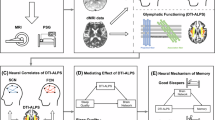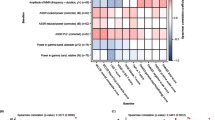Abstract
The use of glycine as a therapeutic option for improving sleep quality is a novel and safe approach. However, despite clinical evidence of its efficacy, the details of its mechanism remain poorly understood. In this study, we investigated the site of action and sleep-promoting mechanisms of glycine in rats. In acute sleep disturbance, oral administration of glycine-induced non-rapid eye movement (REM) sleep and shortened NREM sleep latency with a simultaneous decrease in core temperature. Oral and intracerebroventricular injection of glycine elevated cutaneous blood flow (CBF) at the plantar surface in a dose-dependent manner, resulting in heat loss. Pretreatment with N-methyl-D-aspartate (NMDA) receptor antagonists AP5 and CGP78608 but not the glycine receptor antagonist strychnine inhibited the CBF increase caused by glycine injection into the brain. Induction of c-Fos expression was observed in the hypothalamic nuclei, including the medial preoptic area (MPO) and the suprachiasmatic nucleus (SCN) shell after glycine administration. Bilateral microinjection of glycine into the SCN elevated CBF in a dose-dependent manner, whereas no effect was observed when glycine was injected into the MPO and dorsal subparaventricular zone. In addition, microinjection of D-serine into the SCN also increased CBF, whereas these effects were blocked in the presence of L-701324. SCN ablation completely abolished the sleep-promoting and hypothermic effects of glycine. These data suggest that exogenous glycine promotes sleep via peripheral vasodilatation through the activation of NMDA receptors in the SCN shell.
Similar content being viewed by others
Log in or create a free account to read this content
Gain free access to this article, as well as selected content from this journal and more on nature.com
or
References
Alam MN, McGinty D, Szymusiak R (1995). Neuronal discharge of preoptic/anterior hypothalamic thermosensitive neurons: relation to NREM sleep. Am J Physiol 269 (5 Pt 2): R1240–R1249.
Alfoldi P, Rubicsek G, Cserni G, Obal F Jr. (1990). Brain and core temperatures and peripheral vasomotion during sleep and wakefulness at various ambient temperatures in the rat. Pflugers Arch 417: 336–341.
Bannai M, Kawai N, Ono K, Nakahara K, Murakami N (2012). The effects of glycine on subjective daytime performance in partially sleep-restricted healthy volunteers. Front Neurol 3: 61.
Barrett J, Lack L, Morris M (1993). The sleep-evoked decrease of body temperature. Sleep 16: 93–99.
Campbell SS, Broughton RJ (1994). Rapid decline in body temperature before sleep: fluffing the physiological pillow? Chronobiol Int 11: 126–131.
Cano G, Mochizuki T, Saper CB (2008). Neural circuitry of stress-induced insomnia in rats. J Neurosci 28: 10167–10184.
Chase MH, Soja PJ, Morales FR (1989). Evidence that glycine mediates the postsynaptic potentials that inhibit lumbar motoneurons during the atonia of active sleep. J Neurosci 9: 743–751.
Colwell CS (2001). NMDA-evoked calcium transients and currents in the suprachiasmatic nucleus: gating by the circadian system. Eur J Neurosci 13: 1420–1428.
Coyle JT, Tsai G (2004). The NMDA receptor glycine modulatory site: a therapeutic target for improving cognition and reducing negative symptoms in schizophrenia. Psychopharmacology 174: 32–38.
Curtis DR, Hosli L, Johnston GA (1968). A pharmacological study of the depression of spinal neurones by glycine and related amino acids. Exp Brain Res 6: 1–18.
Czeisler CA, Weitzman E, Moore-Ede MC, Zimmerman JC, Knauer RS (1980). Human sleep: its duration and organization depend on its circadian phase. Science 210: 1264–1267.
Dijk DJ, von Schantz M (2005). Timing and consolidation of human sleep, wakefulness, and performance by a symphony of oscillators. J Biol Rhythms 20: 279–290.
Elliot EE, White JM (2001). The acute effects of zolpidem compared to diazepam and lorazepam using radiotelemetry. Neuropharmacology 40: 717–721.
Fujiki N, Cheng T, Yoshino F, Nishino S (2009). Specificity of direct transition from wake to REM sleep in orexin/ataxin-3 transgenic narcoleptic mice. Exp Neurol 217: 46–54.
Hara J, Beuckmann CT, Nambu T, Willie JT, Chemelli RM, Sinton CM et al (2001). Genetic ablation of orexin neurons in mice results in narcolepsy, hypophagia, and obesity. Neuron 30: 345–354.
Harrington ME, Hoque S, Hall A, Golombek D, Biello S (1999). Pituitary adenylate cyclase activating peptide phase shifts circadian rhythms in a manner similar to light. J Neurosci 19: 6637–6642.
Heresco-Levy U, Javitt DC, Ermilov M, Mordel C, Silipo G, Lichtenstein M (1999). Efficacy of high-dose glycine in the treatment of enduring negative symptoms of schizophrenia. Arch Gen Psychiat 56: 29–36.
Holstege JC, Bongers CM (1991). A glycinergic projection from the ventromedial lower brainstem to spinal motoneurons. An ultrastructural double labeling study in rat. Brain Res 566: 308–315.
Hondo M, Furutani N, Yamasaki M, Watanabe M, Sakurai T (2011). Orexin neurons receive glycinergic innervations. PLoS One 6: e25076.
Inagawa K, Hiraoka T, Kohda T, Yamadera W, Takahashi M (2006). Subjective effects of glycine ingestion before bedtime on sleep quality. Sleep Biol Rhythms 4: 75–77.
Ito C, Wakamori M, Akaike N (1991). Dual effect of glycine on isolated rat suprachiasmatic neurons. Am J Physiol 260 (2 Pt 1): C213–C218.
Johnson JM, Taylor WF, Shepherd AP, Park MK (1984). Laser-Doppler measurement of skin blood flow: comparison with plethysmography. J Appl Physiol 56: 798–803.
Johnson JW, Ascher P (1987). Glycine potentiates the NMDA response in cultured mouse brain neurons. Nature 325: 529–531.
Kallingal GJ, Mintz EM (2010). An NMDA antagonist inhibits light but not GRP-induced phase shifts when administered after the phase-shifting stimulus. Brain Res 1353: 106–112.
Kalsbeek A, Buijs RM, Engelmann M, Wotjak CT, Landgraf R (1995). In vivo measurement of a diurnal variation in vasopressin release in the rat suprachiasmatic nucleus. Brain Res 682: 75–82.
Karnani MM, Apergis-Schoute J, Adamantidis A, Jensen LT, de Lecea L, Fugger L et al (2011a). Activation of central orexin/hypocretin neurons by dietary amino acids. Neuron 72: 616–629.
Karnani MM, Venner A, Jensen LT, Fugger L, Burdakov D (2011b). Direct and indirect control of orexin/hypocretin neurons by glycine receptors. J Physiol 589 (Pt 3): 639–651.
Kawai N, Bannai M, Seki S, Koizumi T, Shinkai K, Nagao K et al (2011). Pharmacokinetics and cerebral distribution of glycine administered to rats. Amino Acids 42: 2129–2137.
Kleckner NW, Dingledine R (1988). Requirement for glycine in activation of NMDA-receptors expressed in Xenopus oocytes. Science 241: 835–837.
Krauchi K, Cajochen C, Werth E, Wirz-Justice A (1999). Warm feet promote the rapid onset of sleep. Nature 401: 36–37.
Krauchi K, Cajochen C, Werth E, Wirz-Justice A (2000). Functional link between distal vasodilation and sleep-onset latency? Am J Physiol Regul Integr Comp Physiol 278: R741–R748.
Krauchi K, Wirz-Justice A (2001). Circadian clues to sleep onset mechanisms. Neuropsychopharmacology 25 (5 Suppl): S92–S96.
Lavie P (1997). Melatonin: role in gating nocturnal rise in sleep propensity. J Biol Rhythms 12: 657–665.
Lu J, Zhang YH, Chou TC, Gaus SE, Elmquist JK, Shiromani P et al (2001). Contrasting effects of ibotenate lesions of the paraventricular nucleus and subparaventricular zone on sleep-wake cycle and temperature regulation. J Neurosci 21: 4864–4874.
Markwald RR, Lee-Chiong TL, Burke TM, Snider JA, Wright KP Jr. (2010). Effects of the melatonin MT-1/MT-2 agonist ramelteon on daytime body temperature and sleep. Sleep 33: 825–831.
Morales FR, Sampogna S, Rampon C, Luppi PH, Chase MH (2006). Brainstem glycinergic neurons and their activation during active (rapid eye movement) sleep in the cat. Neuroscience 142: 37–47.
Mordel J, Karnas D, Inyushkin A, Challet E, Pevet P, Meissl H (2011). Activation of glycine receptor phase-shifts the circadian rhythm in neuronal activity in the mouse suprachiasmatic nucleus. J Physiol 589 (Pt 9): 2287–2300.
Nagao K, Bannai M, Kawai N, Endo T (2007). Glycine decreases core body temperature in healthy volunteer. Jap Soc Sleep Res The 32nd Annual Meeting of Japanese Society of Sleep Research: 1-S-017.
Nakamura K (2011). Central circuitries for body temperature regulation and fever. Am J Physiol Regul Integr Comp Physiol 301: R1207–R1228.
Oka T, Oka K, Hori T (2001). Mechanisms and mediators of psychological stress-induced rise in core temperature. Psychosom Med 63: 476–486.
Pennartz CM, Hamstra R, Geurtsen AM (2001). Enhanced NMDA receptor activity in retinal inputs to the rat suprachiasmatic nucleus during the subjective night. J Physiol 532 (Pt 1): 181–194.
Peterson SL (1994). Diazepam potentiation by glycine in pentylenetetrazol seizures is antagonized by 7-chlorokynurenic acid. Pharmacol Biochem Behav 47: 241–246.
Rampon C, Luppi PH, Fort P, Peyron C, Jouvet M (1996). Distribution of glycine-immunoreactive cell bodies and fibers in the rat brain. Neuroscience 75: 737–755.
Reeds PJ (2000). Dispensable and indispensable amino acids for humans. J Nutr 130: 1835S–1840S.
Sakurai T, Mieda M, Tsujino N (2010). The orexin system: roles in sleep/wake regulation. Ann NY Acad Sci 1200: 149–161.
Saper CB, Lu J, Chou TC, Gooley J (2005). The hypothalamic integrator for circadian rhythms. Trends Neurosci 28: 152–157.
Shinohara K, Honma S, Katsuno Y, Abe H, Honma K (1998). Circadian release of amino acids in the suprachiasmatic nucleus in vitro. Neuroreport 9: 137–140.
Soja PJ, Lopezrodriguez F, Morales FR, Chase MH (1991). The postsynaptic inhibitory control of lumbar motoneurons during the atonia of active sleep—effect of strychnine on motoneuron properties. J Neurosci 11: 2804–2811.
Steininger TL, Gong H, McGinty D, Szymusiak R (2001). Subregional organization of preoptic area/anterior hypothalamic projections to arousal-related monoaminergic cell groups. J Comp Neurol 429: 638–653.
Stone BM, Turner C, Mills SL, Nicholson AN (2000). Hypnotic activity of melatonin. Sleep 23: 663–669.
Sumova A, Travnickova Z, Mikkelsen JD, Illnerova H (1998). Spontaneous rhythm in c-Fos immunoreactivity in the dorsomedial part of the rat suprachiasmatic nucleus. Brain Res 801: 254–258.
Swanson LW (2004). Brain maps: structure of the rat brain. A Laboratory Guide with Printed and Electronic Templates for Data, Models and Schematics 3rd edn. Elsevier: Amsterdam.
Terlouw EM, Kent S, Cremona S, Dantzer R (1996). Effect of intracerebroventricular administration of vasopressin on stress-induced hyperthermia in rats. Physiol Behav 60: 417–424.
Toth E, Lajtha A (1986). Antagonism of phencyclidine-induced hyperactivity by glycine in mice. Neurochem Res 11: 393–400.
van den Pol AN, Gorcs T (1988). Glycine and glycine receptor immunoreactivity in brain and spinal cord. J Neurosci 8: 472–492.
Visser WF, Verhoeven-Duif NM, Ophoff R, Bakker S, Klomp LW, Berger R et al (2011). A sensitive and simple ultra-high-performance-liquid chromatography-tandem mass spectrometry based method for the quantification of D-amino acids in body fluids. J Chromatogr A 1218: 7130–7136.
Watts AG, Swanson LW, Sanchez-Watts G (1987). Efferent projections of the suprachiasmatic nucleus: I. Studies using anterograde transport of Phaseolus vulgaris leucoagglutinin in the rat. J Comp Neurol 258: 204–229.
Werman R, Davidoff RA, Aprison MH (1968). Inhibitory of glycine on spinal neurons in the cat. J Neurophysiol 31: 81–95.
Yamadera W, Inagawa K, Chiba S, Bannai M, Takahashi M, Nakayama K (2007). Glycine ingestion improves subjective sleep quality in human volunteers, correlating with polysomnographic changes. Sleep Biol Rhythms 5: 126–131.
Zhdanova IV, Wurtman RJ, Lynch HJ, Ives JR, Dollins AB, Morabito C et al (1995). Sleep-inducing effects of low doses of melatonin ingested in the evening. Clin Pharmacol Ther 57: 552–558.
Zulley J, Wever R, Aschoff J (1981). The dependence of onset and duration of sleep on th circadian rhythm of rectal temperature. Pflugers Arch 391: 314–318.
Acknowledgements
We thank Dr Yoichi Ueta and Dr Takashi Maruyama (University of Occupational and Environmental Health, Kitakyusyu, Japan) for their valuable comments.
Author information
Authors and Affiliations
Corresponding author
Additional information
Supplementary Information accompanies the paper on the Neuropsychopharmacology website
Supplementary information
Rights and permissions
About this article
Cite this article
Kawai, N., Sakai, N., Okuro, M. et al. The Sleep-Promoting and Hypothermic Effects of Glycine are Mediated by NMDA Receptors in the Suprachiasmatic Nucleus. Neuropsychopharmacol 40, 1405–1416 (2015). https://doi.org/10.1038/npp.2014.326
Received:
Revised:
Accepted:
Published:
Issue date:
DOI: https://doi.org/10.1038/npp.2014.326
This article is cited by
-
Collagen peptide supplementation before bedtime reduces sleep fragmentation and improves cognitive function in physically active males with sleep complaints
European Journal of Nutrition (2024)
-
Metabolic profiles of saliva in male mouse models of chronic sleep disorders induced by psychophysiological stress
Scientific Reports (2023)
-
Sake yeast induces the sleep-promoting effects under the stress-induced acute insomnia in mice
Scientific Reports (2021)
-
Importance of circadian timing for aging and longevity
Nature Communications (2021)
-
Inhibition of Acid Sensing Ion Channel 3 Aggravates Seizures by Regulating NMDAR Function
Neurochemical Research (2018)



